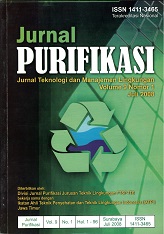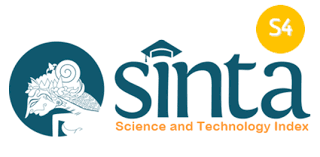PEMANFAATAN BAHAN LIMBAH UNTUK PERKERASAN LENTUR JALAN RAYA
Main Article Content
Abstract
A number of research activities have been carried out on the utilization of various kinds of solid wastes, namely rice husk ash, coal fly ash, residual cane ash, aluminium smelting residue, palm oil residual ash, and used tyre powder, as mixing components for road hardening pavement. Results of these research works were compiled in order to compare the strengths and effectiveness as road pavement mixing components. The methods for implementing the experiments and mixing processes were following the Indonesian National Standards (SNI) and the British Standards (BS) 594. This research showed that the mixtures of rice husk ash and coal fly ash, residual cane ash and cement, and aluminium smelting waste could be utilized for subgrade mixture components. These mixtures could increase the California Beating Ratio (CBR) value up to 25 times and the soil strength up to 6 times. The coal flyash, however, decreased the Plasticity Index (PI) value of about 8%. The CBR value of original subgrade soil of 1% was increased up to 14,78% using 3% of residual cane ash and PC type I using 4 day curing time. Using the residual cane ash of 6%, the initial PI value of 57,29% decreased to 32,05%. The PI value of aluminium smelting waste decreased from 43,36% to 29%. The initial CBR value of 2,73% was increased to 12,67% at 10% concentration within 7 days of dry condition. The coal fly ash met the specification as filler, so that it could be also utilized as Asphalt Treated Base (ATB) filler, as shown by the results of Marshall. The steel blust furnace crust could be used as coarse aggregate in hot mix blend, because it met the requirement as coarse agreggate, as proved by the Marshall test. The rice husk ash, coal fly ash, and palm oil residual ash could be used as filler of Hot Rolled Sheet (HRS), because they meet the specification after being mixed with another material. The Marshall test showed that stability, flow and film thickness also met the specification. The tyre powder met the criteria as an additive, and when mixed with another forming material also met the stability specification.
Downloads
Article Details
Submission of a manuscript to Jurnal Purifikasi means that the work has never been published in another journal and is not under consideration for publication elsewhere. The author hereby agrees to submit the copyright of the manuscript and its contents to Jurnal Purifikasi, if accepted for publication. Accepted manuscripts will be published in printed form where the ISSN is bound in printed form, not in online form (pdf). Authors are not allowed to publish their work in other forms (journals) without permission from the Jurnal Purifikasi manager.
By submitting a manuscript, the author is deemed to know all the rights and obligations attached to each manuscript.








